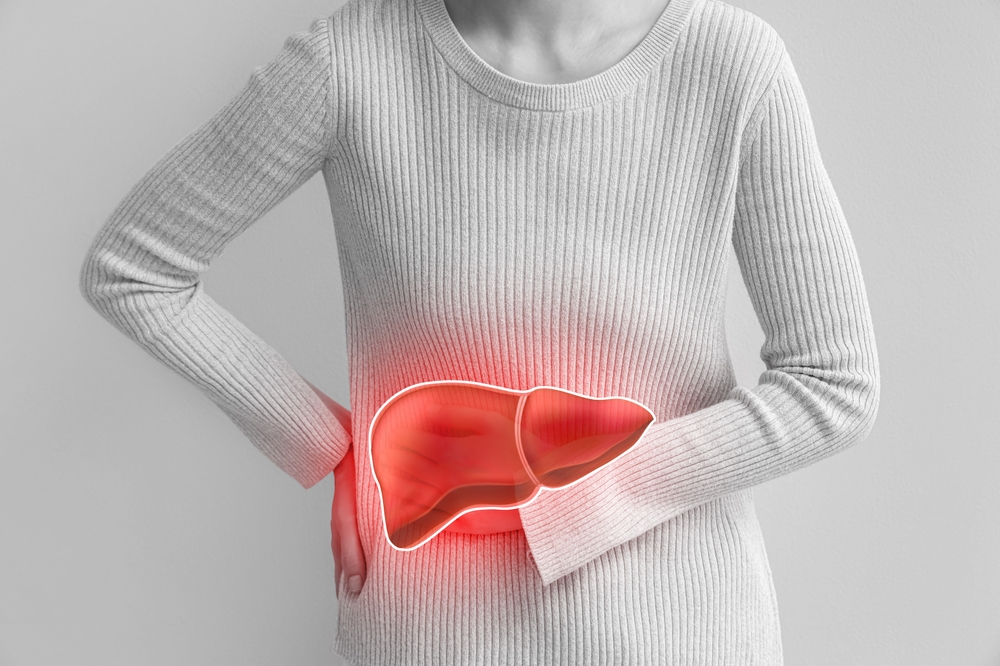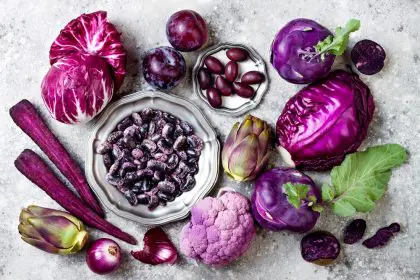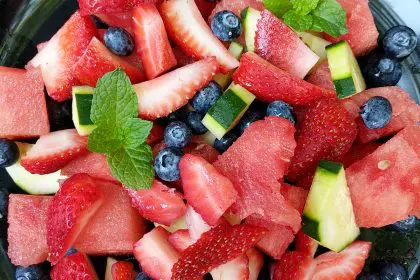Science-backed options that support your hardest-working organ without extreme diets or supplements
Your liver performs over 500 vital functions daily, serving as your body’s primary filtration system by processing everything you eat and drink. This remarkable organ neutralizes toxins, metabolizes medications, produces essential proteins, and manages fat storage—all while regenerating its own tissue when damaged.
While the liver naturally cleanses itself, certain foods contain compounds that enhance its detoxification abilities and protect against damage. These nine evidence-backed options work by activating enzymes that eliminate harmful substances, reducing inflammation, and supporting cellular repair mechanisms crucial for optimal liver function.
Beyond supporting liver health, incorporating these foods into your regular diet offers benefits for your entire body, from improved digestion to enhanced immune function and better energy levels. The best part? These accessible ingredients can be found in most grocery stores and easily integrated into delicious meals and snacks without special preparation or extreme protocols.
Cruciferous vegetables supercharge detox pathways
Broccoli, cauliflower, Brussels sprouts, and kale contain powerful compounds that directly activate the liver’s natural cleansing mechanisms. These vegetables get their liver-supporting power from glucosinolates—sulfur-containing compounds that break down into active forms during chopping, chewing and digestion.
The most studied of these breakdown products, sulforaphane, triggers an increase in phase 2 detoxification enzymes that help the liver transform toxins into water-soluble forms for elimination. Research indicates that sulforaphane may protect liver cells from damage caused by environmental toxins and potentially harmful byproducts of normal metabolism.
In animal studies, regular consumption of cruciferous vegetables has been linked to increased production of glutathione—often called the body’s master antioxidant—which plays a central role in the liver’s detoxification process. Human studies show that people with higher intake of these vegetables maintain better liver enzyme levels, indicating healthier liver function.
For maximum benefit, include at least one cruciferous vegetable daily, ideally lightly steamed to preserve the active compounds while improving digestibility. Chopping these vegetables and letting them sit for 10 minutes before cooking enhances the formation of sulforaphane, maximizing their liver-supporting potential.
Garlic activates liver-protective enzymes
This aromatic kitchen staple contains sulfur compounds that activate liver enzymes responsible for flushing out toxins. Allicin, the compound released when garlic is crushed or chopped, triggers the production of glutathione and other antioxidants that protect liver cells from oxidative damage.
Research indicates that regular garlic consumption helps reduce fat accumulation in the liver, a condition known as fatty liver disease that affects nearly 25% of Americans. Studies have shown that garlic supplementation can lead to reduced liver enzyme levels in people with non-alcoholic fatty liver disease, suggesting improved liver function.
Beyond its direct effects on liver enzymes, garlic offers antimicrobial properties that may help reduce the liver’s toxic burden by fighting harmful microorganisms in the digestive tract before their byproducts reach the liver for processing.
For maximum benefit, crush or chop garlic and allow it to rest for 10-15 minutes before cooking to fully develop its active compounds. Including just one or two cloves daily in your meals provides therapeutic benefits while enhancing flavor in countless dishes.
Leafy greens boost cleansing antioxidants
Spinach, arugula, dandelion greens, and other leafy vegetables provide a concentrated source of chlorophyll—a natural compound that supports the liver’s phase one detoxification pathway. Research suggests chlorophyll may bind to certain toxins, preventing their absorption and reducing the liver’s detoxification burden.
These greens also deliver high levels of glutathione-boosting antioxidants and minerals like magnesium, which is required for glutathione production. Additionally, their high nitrate content helps support healthy blood flow to the liver, enhancing its ability to receive nutrients and remove waste products efficiently.
Bitter greens like dandelion and arugula offer particular benefits through compounds that stimulate bile flow—a critical mechanism by which the liver removes toxins and aids fat digestion. Improved bile flow helps prevent gallstone formation and supports the liver’s natural cleansing functions.
For optimal liver support, aim for 2-3 cups of varied leafy greens daily. Rotating between different varieties ensures a broader spectrum of protective compounds and prevents overconsumption of any naturally occurring compounds that could be problematic in excess.
Berries reduce liver inflammation
Blueberries, strawberries, raspberries, and blackberries contain plant compounds called anthocyanins that give them their vibrant colors and provide powerful anti-inflammatory and antioxidant effects beneficial to liver health. These compounds help reduce oxidative stress—a key factor in liver damage and disease progression.
Research demonstrates that regular berry consumption can help prevent the development of fatty liver disease by improving lipid metabolism and reducing inflammation. In animal studies, berries have been shown to increase antioxidant enzymes in the liver while decreasing inflammatory markers.
The fiber content in berries supports gut health, creating a healthier intestinal environment that reduces the toxin load reaching the liver. This prebiotic effect nourishes beneficial gut bacteria that produce short-chain fatty acids, which may protect against liver inflammation.
Fresh, frozen, and even dried berries (without added sugar) all provide liver benefits. Including one-half to one cup daily, either as a snack or added to meals, delivers meaningful levels of these protective compounds.
Nuts provide essential liver nutrients
Walnuts, almonds, and other tree nuts deliver high concentrations of L-arginine, an amino acid that helps the liver neutralize ammonia—a waste product that can otherwise accumulate and cause damage. The healthy fats in nuts improve lipid profiles, potentially reversing fatty liver conditions.
Walnuts stand out for their high content of alpha-lipoic acid, a powerful antioxidant that has been shown in studies to improve liver function markers and reduce inflammation. They also contain glutathione and the antioxidant vitamin E, which research links to lower levels of liver-damaging enzymes in the bloodstream.
The vitamin E in almonds and sunflower seeds specifically protects the liver from oxidative damage, while their magnesium content supports enzymatic reactions necessary for detoxification. Brazil nuts provide selenium, a mineral crucial for glutathione production that many Americans lack in sufficient quantities.
For liver benefits, consume a small handful (about 1 ounce) of mixed nuts daily. Choosing raw or dry-roasted varieties without added oils or salt maximizes their protective effects while minimizing potentially harmful additives.
Fatty fish reduces inflammatory liver damage
Salmon, mackerel, sardines, and other fatty fish provide omega-3 fatty acids that help reduce systemic inflammation affecting the liver. Research shows these healthy fats may prevent fat accumulation in liver cells and reduce enzyme markers of liver damage.
The anti-inflammatory effects of omega-3s appear to be particularly beneficial in non-alcoholic fatty liver disease, with studies showing improvements in liver enzyme levels and reduced liver fat content following regular consumption of fatty fish or fish oil supplements.
Beyond omega-3s, fatty fish provide complete protein with all essential amino acids needed for the liver’s detoxification processes and tissue repair functions. They also deliver vitamin D, which research increasingly links to improved liver health and reduced inflammation.
For optimal liver benefits, include fatty fish in your diet 2-3 times weekly. Wild-caught varieties typically contain higher levels of beneficial omega-3s and lower levels of environmental contaminants compared to farm-raised options.
Olive oil supports liver enzyme activity
Extra virgin olive oil provides powerful phenolic compounds that help reduce oxidative stress in the liver while activating detoxification pathways. Research shows that these compounds can protect liver cells from damage, even counteracting some effects of less healthy dietary components.
Human studies demonstrate that regular olive oil consumption is associated with lower levels of liver enzymes in the bloodstream, indicating reduced liver damage and inflammation. The monounsaturated fats in olive oil may also help reduce fat accumulation in the liver when substituted for saturated fats.
Mechanistic research reveals that olive oil increases the production of detoxification enzymes and improves bile flow—a critical process by which the liver eliminates processed toxins from the body. This improved bile production also aids in the digestion of fats, reducing stress on the liver.
For maximum benefit, choose extra virgin olive oil, which contains the highest levels of beneficial compounds, and consume 1-2 tablespoons daily. Using olive oil in cold preparations or at low cooking temperatures preserves its beneficial properties that high heat can destroy.
Turmeric stimulates bile production
This golden spice contains curcumin, a compound with potent anti-inflammatory and antioxidant properties that support liver function. Research indicates that curcumin stimulates the production of bile, helping the liver remove toxins and aiding in fat digestion.
Multiple studies show curcumin’s ability to protect liver cells from damage caused by toxins, alcohol, and certain medications. It appears to reduce liver inflammation while enhancing the activity of detoxification enzymes that transform harmful compounds into water-soluble forms for elimination.
For those with fatty liver disease, research suggests curcumin may help reduce fat accumulation in liver cells and improve insulin sensitivity—a key factor in managing this increasingly common condition linked to obesity and diabetes.
While turmeric contains only about 3% curcumin by weight, combining it with black pepper significantly increases absorption. Include one-quarter to one-half teaspoon of turmeric in daily meals, always paired with a small amount of black pepper and healthy fat to maximize its availability to your body.
Green tea protects against oxidative damage
The catechins in green tea, particularly epigallocatechin gallate (EGCG), have been extensively studied for their liver-protective effects. Research shows these compounds help reduce fat accumulation in the liver and protect against oxidative damage from toxins.
Studies indicate that green tea consumption is associated with lower liver enzyme levels, suggesting reduced inflammation and cellular damage. The antioxidant effects of green tea may help prevent liver diseases, with some research showing lower rates of liver cancer among regular green tea drinkers.
Beyond its direct liver benefits, green tea supports weight management—an important factor in preventing fatty liver disease. Its moderate caffeine content combined with L-theanine provides gentle energy without overtaxing the liver as higher amounts of caffeine might.
For optimal liver benefits, consume 2-3 cups of green tea daily, ideally between meals to maximize absorption of its beneficial compounds. Brewing tea for 3-5 minutes extracts the highest levels of catechins, though longer brewing times create a more bitter flavor.
Creating a liver-friendly eating pattern
While including these nine foods regularly supports liver health, your overall dietary pattern plays an even more significant role in liver function. Maximizing liver health requires not just adding beneficial foods but also minimizing exposure to substances that increase the liver’s detoxification burden.
- Limit processed foods containing artificial additives, high-fructose corn syrup, and trans fats, which can contribute to inflammation and fat accumulation in the liver.
- Reduce alcohol consumption as even moderate intake requires liver resources for detoxification and can impair its ability to perform other essential functions.
- Stay well-hydrated with clean water to support the liver’s filtration processes and the elimination of water-soluble toxins.
- Manage portion sizes to prevent excess calorie consumption that can lead to fatty liver disease, regardless of food quality.
- Establish consistent eating patterns with appropriate meal timing to support the liver’s natural rhythms of activity and regeneration.
By combining these broader dietary principles with regular inclusion of the nine liver-supporting foods, you create an eating pattern that not only enhances your liver’s natural cleansing abilities but supports its hundreds of other vital functions essential for overall health and wellbeing.















